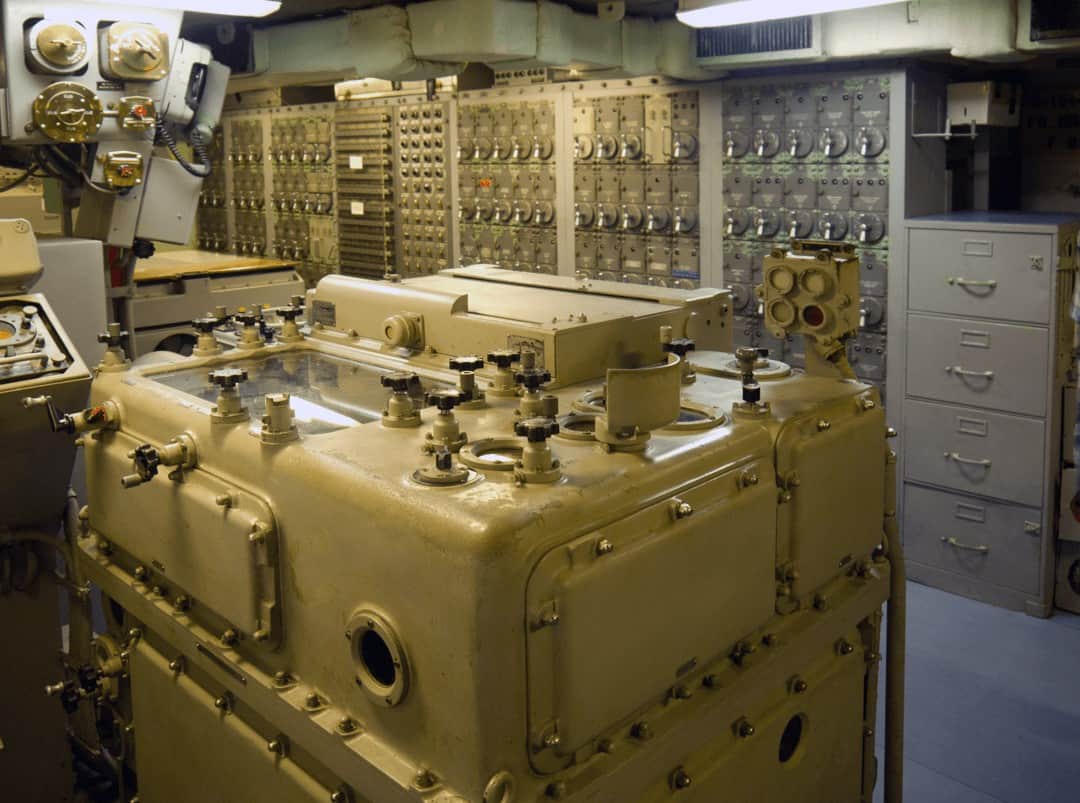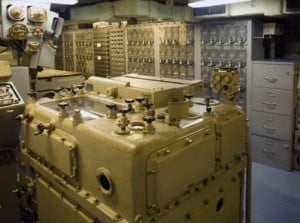Do Analog Computers Use Continuous Signals


What are Analog Computers: Complete Explanation
A computer that processes analog data is known as an analog computer. Analog computers store information in physical quantities in a continuous format and use measurements to perform computation.
Analog computers are suitable for measuring data that Analog computers cannot translate into numbers or codes. However, due to the wide range of complications involved, analog computers have been largely superseded by digital computers in industrial and scientific applications such as control systems and airplanes.
At one time, when digital computers have not existed yet or they lacked sufficient performance, the analog computers were widely used (even the ancient Antikythera mechanism and the slide rule can be considered as analog computing devices). The advent and rapid progress of digital computers made analog computers largely obsolete in 1950s and 1960s, though they remain in use in some specific applications, like the flight computer in aircraft, and for teaching control systems in universities. Nevertheless several amazing analog computers deserve our attention.
Analog Computers: An Exact Definition
The definition of an analog computer is as follows:
An analog computer is one that uses constantly changing entities such as mechanical, electrical, hydraulic, and so on. During the 1950s and 1960s, these were initially used. However, instead of having discrete data, they use continuous values. As a result, these computers operate on analog signals. Furthermore, these signals are continuous signals with a time-varying characteristic.
How do Analog Computers Work
A set of circuit modules capable of executing summing, scaling, integration, or multiplying of voltages, as well as function-generating modules, make up an analog computer. Those devices consist of integrated-circuit operational amplifiers and function generators in the most recent systems. Many dozen amplifiers are likely to be necessary on a big analog computer.
The inputs and outputs of adequate modules are intertwined to solve a given challenge. For example, the connection of physical quantities differing with time can be demonstrated as differential equations, incorporating scaling, feedback, and establishing preliminary circumstances as needed, with voltages representing the physical quantities. Single or simultaneous equations can be addressed in this fashion in engineering and scientific computation, modeling, and simulation applications.
Who Created Analog Computers
The first Analog Computer was invented by Mihailo Petrović Alas, who was a Serbian mathematician.
From the types of machines, a machine in which continuously fluctuating physical quantities, such as electrical potential, fluid pressure, or mechanical motion, are represented in a fashion comparable to the corresponding amounts in the problem to be solved is called an analog computer. The analog system is built up based on beginning conditions and then left to modify at will. Finally, the variables in the analog model are measured to obtain answers to the problem.
The history of analog computers is a little unclear. However, the simplicity and size of analog computers make it one of the advantages for many to take credit for its invention. First analog computers were specialized machines, such as William Thomson's tide predictor, in 1873. In 1898, A.A. Michelson and S.W. Stratton developed an 80-component harmonic analyzer. They could provide a sinusoidal motion that could be multiplied by constant factors using a fulcrum on levers. To form a resultant, springs were used to combine the components. The differential analyzer was invented in the early 1930s by Vannevar Bush, an American electrical engineer, and his colleagues and was another milestone in creating the modern analog computer. This machine was the first of its kind in history, using mechanical integrators (variable-speed gears) to solve differential equations.
What is the Application of Analog Computers
Analog computers were extensively utilized in scientific and industrial purposes well after the invention of digital computers, as evidenced by their specification and available size. They had several advantages, including that they were often significantly faster at the time. However, they were obsolete as early as the 1950s and 1960s in history, though they remained helpful for a long time. They are used in some specific applications, such as aircraft flight simulators, aircraft flight computers, and university teaching control systems, as they were of affordable price. Mechanical watches, for example, are analog computers in which the seconds, minutes, and hours needles in the clock are driven by the constant and periodic rotation of interconnected gears. Because digital computers were unsuitable for more complicated applications, such as aircraft flight simulators and synthetic-aperture radar, analog computing (and hybrid computing) remained the realm of analog computing (and hybrid computing) well into the 1980s.
Examples of Analog Computers in the Real World
Some of the examples of types of analog computers with significant advantages and manageable size, and affordable price in the real world are as follows:
Thermometer
An analog thermometer operates by using a graduated scale and the properties of mercury. When mercury is heated, it expands from a liquid state to a solid-state. As a result, the customer can diagnose the body's feverish condition. In addition, the temperature of the body is an analog signal. As a result, a thermometer used to measure body temperature is an excellent example of one of the types of analog computers.
Speedometer
A speedometer is a gadget that measures how fast a vehicle is traveling. The speedometer's scale is properly graduated, often in kilometers per hour. The speed is guided by a needle that can deflect freely in response to the analog signal it receives. The speedometer cable is connected to the gear shaft, while on the other, it is connected to a permanent magnet. There is no physical connection between this magnet and the metallic speed cup. With the help of an inductor rod with a spring attached, the speed cup is connected to the indicator. The gearbox's spinning outer shaft rotates the magnet.
The metallic speed cup is drawn to the moving magnet's magnetic field. The speed cup's mechanical movement is employed to deflect the needle. The deflection of the needle indicates the speed of the vehicle.
Analog Clock
An analog clock is a common and more minor price piece of equipment in our daily lives. An analog clock is a type of analog computer, which many people are unaware of. It makes use of a piezoelectric-sensitive quartz crystal. The piezoelectric crystal vibrates at a rate of precisely 32,768 vibrations per second thanks to the voltage provided by the battery, which is an analog signal. These vibrations form a pulse, and one pulse is the time equivalent of one second. As a result, one second equals 32,768 piezoelectric crystal vibrations.
Seismometer
A seismometer is a device that measures the magnitude of an earthquake. This device is kept close to the ground. The earth, as well as the seismometer, shakes when an earthquake happens. Seismic waves are the waves that occur during an earthquake. Seismic waves are then recorded on graph paper in the setup, referred to as a seismograph. After a thorough examination and analysis of the seismograph, the seismologists inform us of the earthquake's magnitude.
Voltmeter
Because voltage varies consistently concerning time, it is an analog signal. As a result, analog voltmeters can be considered analog computers. The potential difference between two sites on an electrical network is displayed using a voltmeter. A deflecting needle and a curving graduated scale on the display unit are the main features of analog voltmeters. The voltmeter is linked in parallel with the circuit to measure the voltage drop across the resistor.
Analog Computer Explained: Everything You Need To Know FAQs (Frequently Asked Questions)
What is an analog computer?
An analog computer is a machine that analyzes analog information. Analog computer features and stores data in physical quantities in a continuous build and conduct calculations using measurements. It is not the equivalent of a digital computer, which expresses results using symbolic numerals.
When was the analog computer invented?
Vannevar Bush (1890–1974), a Massachusetts Institute of Technology electrical engineer, invented the very prototype modern analog computer in the 1930s. Disgusted by the time-consuming mathematical computations of differential equations required to solve some engineering problems, Bush and a team from MIT's electrical engineering department began working on a device to solve these equations automatically.
Who invented the analog computer?
They were initially built in the 1920s and 1930s after being invented in 1876 by James Thomson. Some sections of mechanical analog gunfire control computers were based on them.
What is an example of an analog computer?
The vast features of analog computers allow it to have many examples in the real world, such as thermometers, speedometers, analog clocks, seismometers, and voltmeters.
Are analog computers still used?
Given the variety of complications involved, analog computers have been largely superseded by digital computers in industrial and scientific applications such as control systems and airplanes.
What is the difference between an analog computer and a digital computer?
An analog computer, also known as an analog computer, models a situation by using the continual variation aspect of physical phenomena such as electrical, mechanical, or hydraulic characteristics. Digital computers, on the other hand, express variable amounts symbolically and using discrete-time and amplitude values.
Source: https://history-computer.com/analog-computers/
0 Response to "Do Analog Computers Use Continuous Signals"
Post a Comment